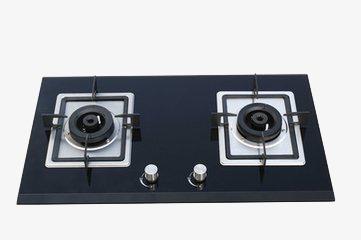

Time:2021/05/13 Views:2699
Common faults of gas stove
1. This kind of failure should be caused by the cooker with flameout protection function. Generally speaking, the feedback information cannot reach the pulser, which causes the cooker to form a judgment of "burning out (that is, the fire is extinguished)" due to the lack of information, so the protection mechanism is activated. - Close the solenoid valve. As soon as the solenoid valve is closed, the gas cannot reach the burner, and the gas stove is repaired by the owner of Guanyinqiao, and the fire is naturally extinguished. The ignition action is also based on the premise of "turning off the flame (or not igniting)". When the fire is not lit, press the knob to make the ignition nozzle continue to supply air, so the igniter continues to burn - in the design of the cooker, the solenoid valve and ignition The cooker must take precedence over the flameout protection feature, or we'll never light the cooktop.
2. Solution: Check the feedback circuit and make it form a path.
Gas stove selection criteria:
1. Common sense in the purchase of gas stoves, safety and environmental protection are the selection criteria
2. Whether the gas stove is good or not depends on the stove. The stove is known as the "heart of the stove". As the core component of the cooker, the cost of the burner accounts for 1/3 of the total cost. The difference in the way of air intake of the cooker is related to the safety, power and energy saving performance of the cooker.
3. The air intake mode of the embedded gas stove burner is divided into two types: "upward air intake" and incomplete upward air intake. Among them, the best way to enter the air is "upward air intake". At present, the Italian Sabaf, which is mainly used in China, is a professional manufacturer of "upward air" type burners. Non-complete upward air intake includes: "side air intake", "rear air intake", "downward air intake", "three-dimensional air intake", etc., which are characterized by large firepower and adjustable firepower, which can meet the needs of the Chinese people. The disadvantage is cleaning Poor, especially there is a safety hazard, it is possible that tempering will cause the tempered glass panel to burst.
Reference source: Encyclopedia: Gas stove
How to choose a gas stove

firepower
When purchasing a gas stove, the most important thing to pay attention to is the "heat load", which determines the firepower of the gas stove. The higher the heat load and the greater the firepower, the more "pot gas" the cooking will have, the shorter the cooking time, and the more satisfying our family's various cooking methods.
For ordinary families, the heat load of the gas stove is between 4kw and 5kw, which is enough for most gas stoves on the market. However, even if the heat load is the same, there are differences between gas stoves, which we also need to consider in conjunction with the energy efficiency class.
The energy efficiency level of the gas stove is related to the thermal efficiency. The heat load is also 4kw. The lower the energy efficiency level, the higher the thermal efficiency, the greater the effective firepower, the more waste gas can be reduced, and the energy saving and environmental protection. According to the national standard, the thermal efficiency of a gas stove with level 3 energy efficiency should reach 55%, while the thermal efficiency of level 1 energy efficiency can reach 63%. If you want to buy a gas stove with real "high power", you have to look for the heat load and thermal efficiency.
ignition method
The ignition methods of gas stoves are divided into piezoelectric ceramic type and electronic pulse type, but the current mainstream gas stoves use electronic pulse type (requires batteries), and piezoelectric ceramic type has been gradually eliminated. In addition, electronic pulse ignition is also divided into ordinary pulse ignition and automatic pulse ignition.
Ordinary pulse ignition requires pressing for a period of time when igniting. If you let go halfway, the ignition will fail, while automatic pulse ignition does not require pressing, and the ignition success rate can reach %. In contrast, automatic pulse ignition is easier and more convenient. When purchasing a gas stove, you must look for this ignition method. The safety of the gas stove is mainly reflected in the flameout protection (the gas source can be cut off in time after the flameout). According to the national standard, all gas stoves on the market must have a flameout protection device. However, different gas stoves use different flameout protection devices. There are mainly two types: thermocouple type and ion induction type. The traditional thermal type has been Be eliminated.
Thermocouple type: It mainly uses thermocouples to sense the temperature difference to cut off the gas source. The time is 10-20 seconds. This kind of flameout protection device has low cost and is widely used. Most gas stoves will choose this type.
Ion induction type: The gas source is cut off mainly by sensing the ions of the flame. Theoretically, the reaction time can reach 0.5 seconds, but in order to avoid the flame shaking and misoperation, the reaction time is controlled at 4-6 seconds. This kind of flameout protection device is safer and more expensive to manufacture, so it is only used for medium and high-end gas stoves.